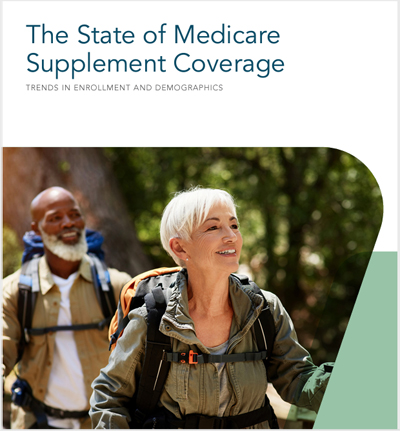The Continuing Relevance and State of Medigap Plans
By Clive Riddle, March 18, 2022
With such focus in Medicare-World on Medicare Advantage plans, its easy to forget that the continuing relevance of Medigap plans. While there are close to 24 million covered in MA plans, another 14.4 million have Medigap coverage.
AHIP’s Center for Policy Research has just released a new report: The State of Medicare Supplement Coverage, which examines trends in Medicare Supplement insurance and discussed the financial value these plans offer to seniors and people with disabilities.

Their report found:
- Among original Medicare enrollees without additional insurance coverage (such as Medicaid, employer-provided insurance, etc.), 53% chose Medicare Supplement coverage in 2020.
- Between December 2017 and December 2020, the share of original Medicare beneficiaries who purchase Medicare Supplement coverage increased from 35% to 39%.
- However, in the first pandemic year, national Medicare Supplement 2020 enrollment was 14,395,788 (decreasing by 87,000, or -0.6%). This is in contrast with the consistent rate of growth of 3-4% observed in the three previous years.
- Medicare enrollees with Medicare Supplement coverage were 3 times less likely to have problems paying medical bills compared to enrollees without Medicare Supplement policies. Only 4% of enrollees with Medicare Supplement coverage reported having difficulty paying medical bills in the last 12 months, compared to 12% of FFS Medicare enrollees without Medicare Supplement coverage.
- Medigap coverage skews female – at 58%, which is explained at least in part by women’s longevity compared to men. 40% of Medicare Supplement enrollees were widowed, divorced, separated, or never married.
- A significant number of Medicare Supplement policyholders were individuals with lower incomes: 11% had annual household incomes below $20,000 and 26% had incomes below $30,000. This pattern was more widespread in rural areas, where 17% of Medicare Supplement policyholders had incomes below $20,000
The sources for the 2022 report are the 2020 National Association of Insurance Commissioners (NAIC) data, 2020 California Department of Managed Health Care data, and 2019 Medicare Current Beneficiary Survey (MCBS) results.

 Share This Post
Share This Post 
Reader Comments